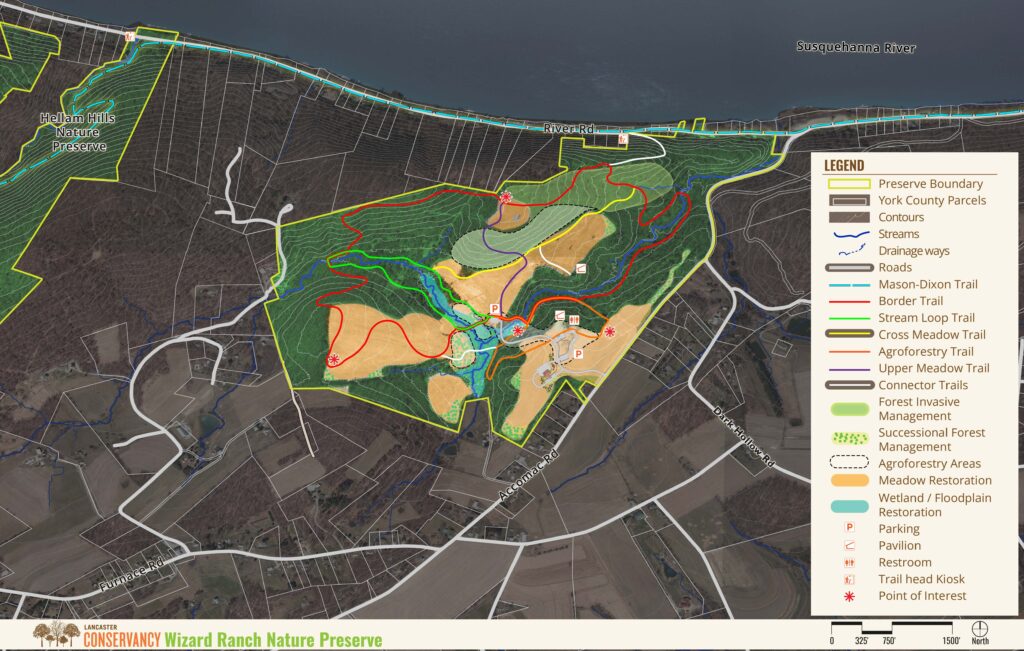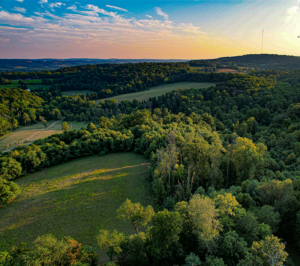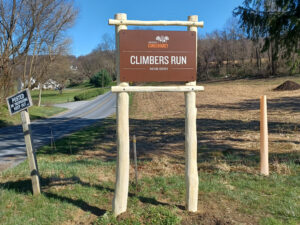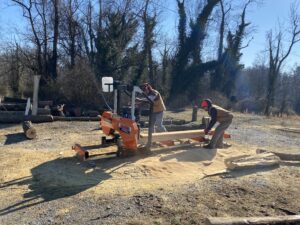Whether composting food waste or buying less plastic, there are numerous ways we can all make more sustainable choices in our everyday lives. Recently, the Conservancy has embraced the idea of sustainability in unique and useful form – agroforestry at Wizard Ranch Nature Preserve.
What Is Agroforestry?
Agroforestry is a land management technique that can be used to enhance habitat quality while at the same time producing raw materials and other benefits like food, lumber, or carbon sequestration. Agroforestry is a tried-and-true land management system. In fact, as Brandon Tennis, Senior Vice President of Stewardship, explains, “This active form of land management was utilized by Indigenous cultures well before European settlers brought their own forms of agroforestry to the region.”
“Applying sustainable and habitat-driven agroforestry practices honors the history of our landscape and reconnects us through stewardship to our natural lands at the opportunity of enhancing ecosystem function and habitat quality,” Tennis adds.
The Conservancy has used agroforestry before when it was appropriate in land management plans. At Wizard Ranch, the Conservancy will utilize several types of agroforestry land management techniques such as coppicing, live stakes, and forest gardens.

A map showing the proposed future uses of Wizard Ranch Nature Preserve, including several agroforestry demonstration areas.
When considering agroforestry practices, the Conservancy’s primary goal is always to improve habitat and ecosystem quality. Many times, there is a secondary benefit, such as a supply of wood for projects when certain species of trees like black locust are coppiced to regenerate growth and create a more open understory.
How Do We Use Agroforestry?
While we try to minimize the need for built infrastructure when we design access to our nature preserves, it is often necessary to construct things like directional signs, map kiosks, fences, benches, and footbridges – and we have been searching for a way to do this more sustainably. This is where the secondary benefits of our agroforestry projects come into play.
The Conservancy has for a while now been using fallen trees on our preserves as nearby erosion control or stormwater management tools. We have also more recently been using black locust trees coppiced on our own preserves for posts, sign frames, and bollards. But our stewardship team was looking for a way to go even further, and in early 2022, we began to consider the potential usefulness of owning a portable mill. A mill would create even more options beyond signposts for how some larger fallen trees or trees harvested through our agroforestry projects could be sustainably reused on our properties.
In September, we were able to find and purchase an affordable and suitable basic mill at a local auction. The mill was reassembled at Wizard Ranch, and staff was taught how to use it. The first load of lumber we milled was from a restoration project on Wizard Ranch, where black locust trees were removed from deteriorated hedges to combine small meadows into large meadows that are best for ground bird habitat. The resulting black locust lumber, which is highly rot-resistant, will be used to construct footbridges over streams along the new trail system being built at Wizard Ranch. Any leftover wood will be stored to use for future repair or replacement projects.
What Are the Sustainability Wins?
The sustainability wins that come from milling our own lumber are clear in the additional wildlife and habitat benefits of agroforestry. The amount of carbon produced when procuring lumber from other sources is high; there are emissions related to driving to the site to cut the trees, transporting the trees to the mill, sending the lumber to the warehouse and then the store, driving to the store to buy the lumber, and then driving the lumber back to the project site. Milling the lumber derived from agroforestry practices on our own sites cuts out both the carbon emissions and costs associated with procuring lumber elsewhere. As Eric Roper, Forester for the Conservancy, explains, “Not only are we saving the cost of purchasing the lumber, but the carbon footprint of each piece of lumber is reduced significantly as it is not being transported multiple times before being used.”
Another sustainability benefit is the quality of the lumber being milled from our properties versus the quality of commercially produced pressure-treated lumber. Often pressure-treated lumber contains potentially harmful chemicals such as copper, arsenic, and chromium. Using our own higher-quality lumber reduces the quantity of these harsh chemicals being introduced into the nature preserves.
And last but not least is the financial sustainability achieved from milling our own lumber. Decreasing the amount of commercial lumber we need to purchase for access and maintenance projects could eventually provide us with considerable cost savings. Contributing to perpetual financial sustainability of visitor infrastructure projects that rely on resources from the preserved land itself for both building and repair materials for projects that benefit the ecosystems in our preserves and public access to those preserved lands is sustainability at its finest.
Creating disturbance through the coppicing or removal of some trees is a natural and important part of land management and habitat and ecological restoration – especially as natural disturbance through wildland fires has been limited in our area for many years. And while collecting raw materials through agroforestry is secondary to the ecological benefits, the Conservancy, with the addition of this mill, has found a way to take sustainability one step further. As Steve Mohr, Senior Preserves Manager for the Conservancy, put it, “The end result of a workable mill on a Lancaster Conservancy preserve will be a highly efficient, 100% sustainable way to provide necessary building materials for use on our preserves.”



